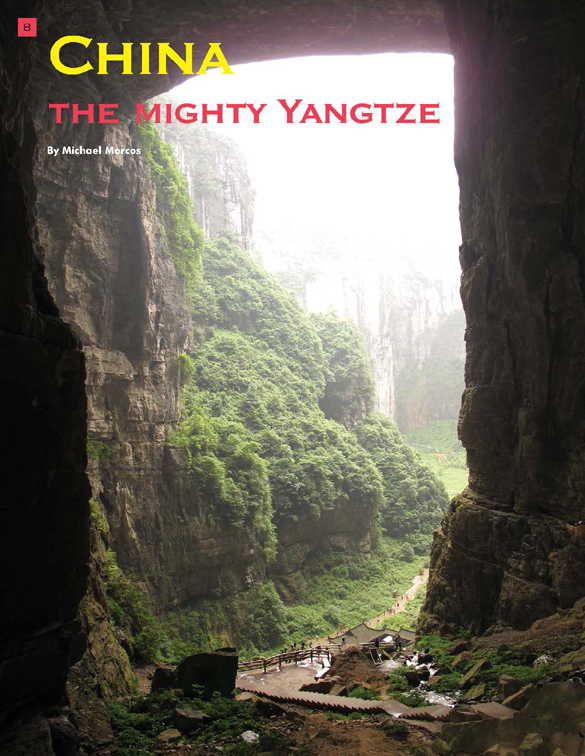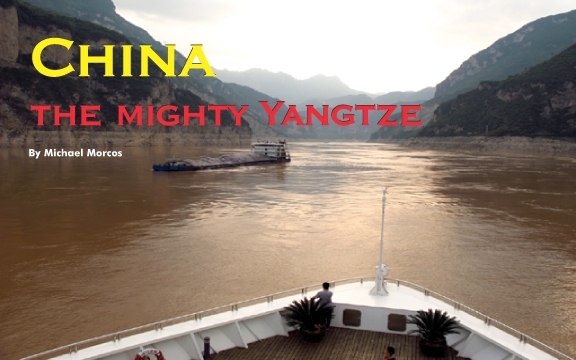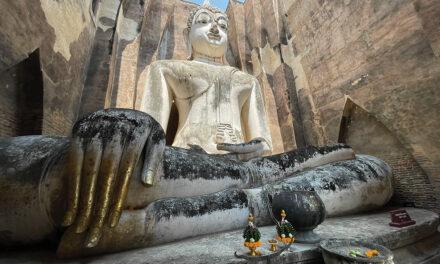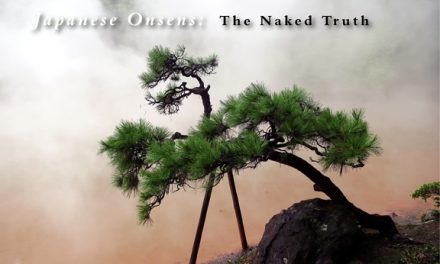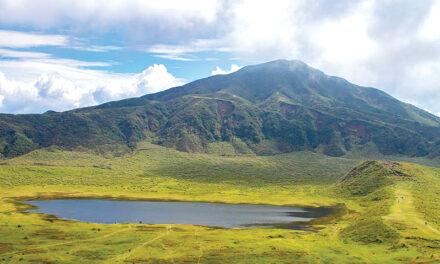China
The mighty Yangtze
Published in the Fall 2012 Issue of Canadian World Traveller
By Michael Morcos
 Adventure and exploration on the Yangtze River in China: Part Two
Adventure and exploration on the Yangtze River in China: Part Two
This leg of the trip was thrilling as we cut through the tranquil waters of the Yangtze. I stayed aboard the M.S. Yangtze 2, which is unbelievably luxurious and less than one year old. Besides giving you the chance to get up close with stunning scenery, this vessel is equipped with everything to make a stay comfortable and relaxing, including a movie theater, large deck space and on-board spa. You can feel the energy of Chinese tradition flow by taking a tai chi class or curling up with a language phrase book in one of the hammocks. Cabins are spacious and adorned with charming decor, but I spent a lot of my time enjoying the various activities and entertainment, including the tasty restaurants and nightly karaoke. I truly sailed in style down the waterway and was surprised with new sites to see around every river bend.
My cruise was a three-day excursion, but many choose to extend their trip and see more of the river in one or two week increments. From the interior of the river to the popular destination of Shanghai, it takes about nine days by boat to make the journey.
Side trip down the Shennong Stream
While we did spend the majority of the time on the main waterway, we did take a detour on the Shennong Stream. Cliffs surround the waterway that is narrow in many areas, so small wooden boats have to navigate around each other carefully. This part of the tour can sometimes be chaotic and full of tourists, but that makes it fun in a campy way. Plus, the scenic views of the Chinese landscapes is well worth the trip.
White Emperor City
A stop at the White Emperor City on the Yangtze River awarded us with some more exquisite temples pavilions and plazas. Entering the main temple brings me past some almost scary dragon figures that guard the entrance and looks as if they could almost come to life. The complex was originally built for the White Emperor, also known as Gong Sunshu, but the honor frequently switched throughout the Ming dynasty to honor other leaders such as Liu Bei and Zhang Fei. Those visiting who want to learn more about the temple’s historical timeline can head to the various museums and exhibits hosted inside the structure that tell the stories of the city’s royalty.
Fengdu Ghost City
Legend and lore surround the famous “Ghost City,” as it is known by many Chinese residents. Different kinds of faith and their traditions blend together to create an intricate and fascinating region, combining ideas from Buddhism, Taoism and Confucianism. Brave tourists will take one of the guided spirit tours and learn more about how this city got its eerie nickname. However, its interesting enough to simply stroll through the temple spaces and admire the architecture that is prevalent in this part of China. Chinese people are often connected deeply with their faith in various forms, and some will even come to places like Ghost City to connect with their ancestors or find answer in their spiritual life.
Checking out the Dazu stone carvings
I cannot imagine having the patience and artistic ability to create something beautiful from blocks of stone. But the artists who have made giant figures out of rocks have perfected this unique art form and collective have made more than 50,000 statues and roughly 100,000 Chinese characters for secular and spiritual display. Most represent Buddhist figures and are located around the temples. Since the whole project has been named a UNESCO World Heritage Site, it is a busy and lively place to visit, rain or shine.
Fresh food at the Dazu Lotus Garden
Viewing the handiwork of ancient and talented artists had me work up an appetite. Luckily a lunch at the Dazu Lotus Garden was scheduled, and it certainly satisfied my palate. Many of the spiced, savory dishes include just-picked flowers as edible garnishes. Of course the cuisine is the main highlight, but walking through the amazing gardens and adjacent farmlands was also incredible, along with the elegant, private eating rooms that added to the natural ambiance.
Seeing the Wulong show
I couldn’t get enough of all the exciting shows presented in each city, and the Wulong show at the Furong Dong caves was no exception. During this lavish demonstration, more than 100 performers take to the outdoor stage and are accompanied my bold theatrics, sound technology and lighting. Guests peer through the caves to watch the show, which focuses on stories and tall tales surrounding the region and its people. It can be wonderful to see a concert indoors, but there can be something special about watching skilled artists show off their capabilities in a breathtaking, natural setting.
Experiencing Fairy Mountain
Some people who venture to Fairy Mountain may think they have stepped onto a movie set, as a few kung fu and ninja-style movies have been filmed inside these wild landscapes. Giant cliffs form large peaks, some of which are connected by natural bridges of stone and rock. At the bottom of the valley, underneath the bridges, is a historical set of buildings. I felt as if I was in a cave-like area while beneath the bridges, but form above the formations look like big holes in the ground, covered by foliage. In fact, everything is seemingly under a blanket of trees, shrubs and wild ferns, giving it a rugged and almost untouched look that is a titillating to explore.
Perusing a local market
More culinary sagas were to be had as we continued on our trip to the local market. The ship stopped at a fun bazaar that was full of exotic finds and rare delicacies. Although it was difficult to figure out what some the ingredients are, it can be great just gazing into the vendor’s containers and guessing what types of mushrooms, herbs, grains and more may be inside. Markets are commonplace is smaller villages, giving many a chance to show off their wares to each other and to passerby looking to sample new eats or take home some unique souvenirs.
We then had a large feast of food that was mostly sourced from local businesses and farms. A massive spread was laid out before me and I had a hard time choosing where to start, between the sauteed greens, soups and all the amazing aromas wafting from each plate.
Journeying to Chongqing
As sad as I was to wave goodbye to the M.S. Yangtze 2, I was looking forward to visit Chongqing, the final stop on my journey. What is called a city but largely regarded as a province, this area is home to more than 33 million Chinese people and is the largest metropolis nationwide.
Many travellers stick to the main parts of the city for temple visits and culinary options. However, a side trip to the Ciqikou ancient part of the Chongqing also draws many guests for its 1,000 year-old buildings form the Ming dynasty. Other notable landmarks and points of interest in the city include the museum devoted to the Three Gorges, the Liberation Monument and the scenic Nanshan Park. There is also a pulsing nightlife where many locals and tourists alike indulge in dancing, dining and mingling with each other at the various hangouts, restaurants and bars. I could have easily spent an extra week traversing through Chongqing.
I was blown away by the incredible talent and enthusiasm each place in China brought to the table, from a deep understanding of spirituality to just knowing how to have a great time with friends. My passage on the Yangtze River was the quintessential way to experience a large part of what makes this destination so intoxicating.
For More Info on China:
China National Tourist Office
480 University Ave, Suite 806
Toronto, ON M5G 1V2
Tel: 416-599-6636 or 1-866-599-6636
Official Websites: www.tourismchina-ca.com and www.cnto.org
